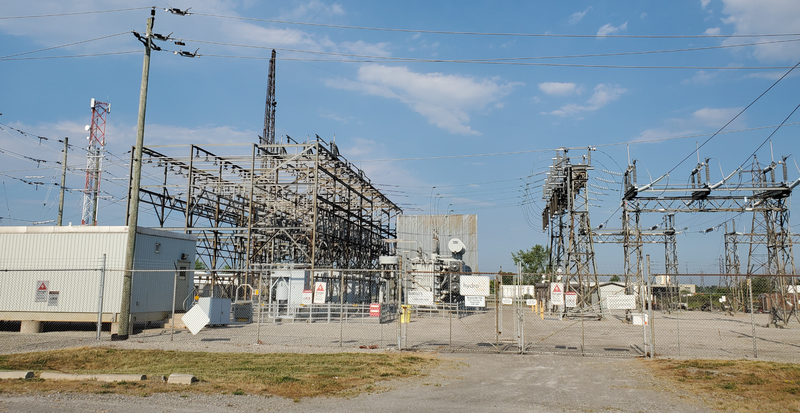Transformers are the unsung heroes of our modern power infrastructure, silently stepping up or down voltage levels to ensure a steady and reliable supply of electricity. However, beneath their unassuming exteriors lies a complex world where energy transformation occurs. In this article, we explore the phenomenon of transformer explosions, delving into their causes, consequences, and the crucial safety measures to prevent them. Understanding the Difference Between Fire Barriers and Fire Partitions is key to ensuring the safety and reliability of our power supply to get Understanding the Difference Between Fire Barriers and Fire Partitions.
The Anatomy of a Transformer
Transformer Components
To comprehend transformer explosions, it’s essential to grasp the fundamental components of a transformer. These devices consist of a magnetic core, primary and secondary windings, and various insulating materials. The core serves as the pathway for magnetic flux, while the windings facilitate the transformation of electrical energy. Insulating materials ensure that electricity flows where it should and prevent unwanted short circuits. Cooling systems, often involving transformer oil, are integral for dissipating the heat generated during operation.
Normal Operation
In an ideal scenario, transformers operate smoothly, efficiently converting electrical energy from one voltage level to another. This transformation relies on the interplay of magnetic fields and the flow of electrical current through the windings. Transformers play a pivotal role in electricity distribution, ensuring voltage levels are suitable for different applications, from powering homes to driving industrial machinery.
Factors Leading to Overheating
However, transformers are not immune to challenges, and one of the most significant threats they face is overheating. Overheating can result from various factors, including excessive load conditions and insulation degradation. As transformers handle substantial power loads, maintaining optimal operating temperatures is critical. Any deviation from these conditions can lead to overheating, a precursor to potentially catastrophic events like explosions.
Transformer Explosions: Causes and Mechanisms
Faults Leading to Explosions
Transformer explosions often follow a series of faults within the device. Short circuits, overloading, and insulation failures can initiate a chain of events culminating in a sudden release of energy. These faults create extreme conditions within the transformer, causing components to fail under immense stress, ultimately resulting in an explosion. The explosion can be powerful, causing significant damage to the transformer and surrounding infrastructure.
Role of Transformer Oil
Transformer oil, also known as insulating oil, plays a crucial role in maintaining transformer performance. It serves as both a coolant and an insulator. However, when oil deteriorates due to factors like moisture or contamination, it can become a significant contributor to transformer explosions. The breakdown of oil insulation can lead to electrical arcing and the ignition of combustible gases, triggering an explosive event. Ensuring the quality and maintenance of transformer oil is vital for preventing such incidents.
Safety Measures and Prevention
Preventing transformer explosions requires a multi-faceted approach. Safety measures include the incorporation of pressure relief devices (PRDs) within transformers. PRDs act as pressure relief valves, venting excess pressure during fault conditions, thus preventing catastrophic explosions. Additionally, regular maintenance, including insulation testing and oil quality analysis, is essential for identifying potential issues before they escalate into critical faults.
Consequences and Impact of Transformer Explosions
Economic and Infrastructure Impact
The consequences of transformer explosions extend far beyond the immediate damage to the device itself. The economic ramifications can be substantial, affecting businesses, jobs, and communities. Disrupted power supply can result in financial losses for industries and individuals alike. Moreover, infrastructure damage can have implications for the overall stability of the power grid and its ability to meet the demands of society.
Environmental Consequences
Transformer explosions can also have severe environmental consequences. The release of hazardous materials, including transformer oil, can lead to soil and water contamination. Oil spills can harm ecosystems and pose risks to public health. Addressing these environmental repercussions requires swift and effective response measures, further emphasising the importance of prevention.
Ensuring Resilience and Preparedness
In conclusion, transformer explosions underscore the critical importance of maintaining the reliability of our power supply. A proactive approach that includes regular maintenance, monitoring, and the incorporation of safety measures like PRDs is essential. Additionally, ensuring resilience in power systems through backup transformers and redundancy can help mitigate the impact of explosions. By prioritising safety and preparedness, we can work towards a more reliable and secure electrical infrastructure, safeguarding the lifelines of modern society. Understanding the Difference Between Fire Barriers and Fire Partitions is just one aspect of this broader effort to ensure the safety and reliability of our power supply.

